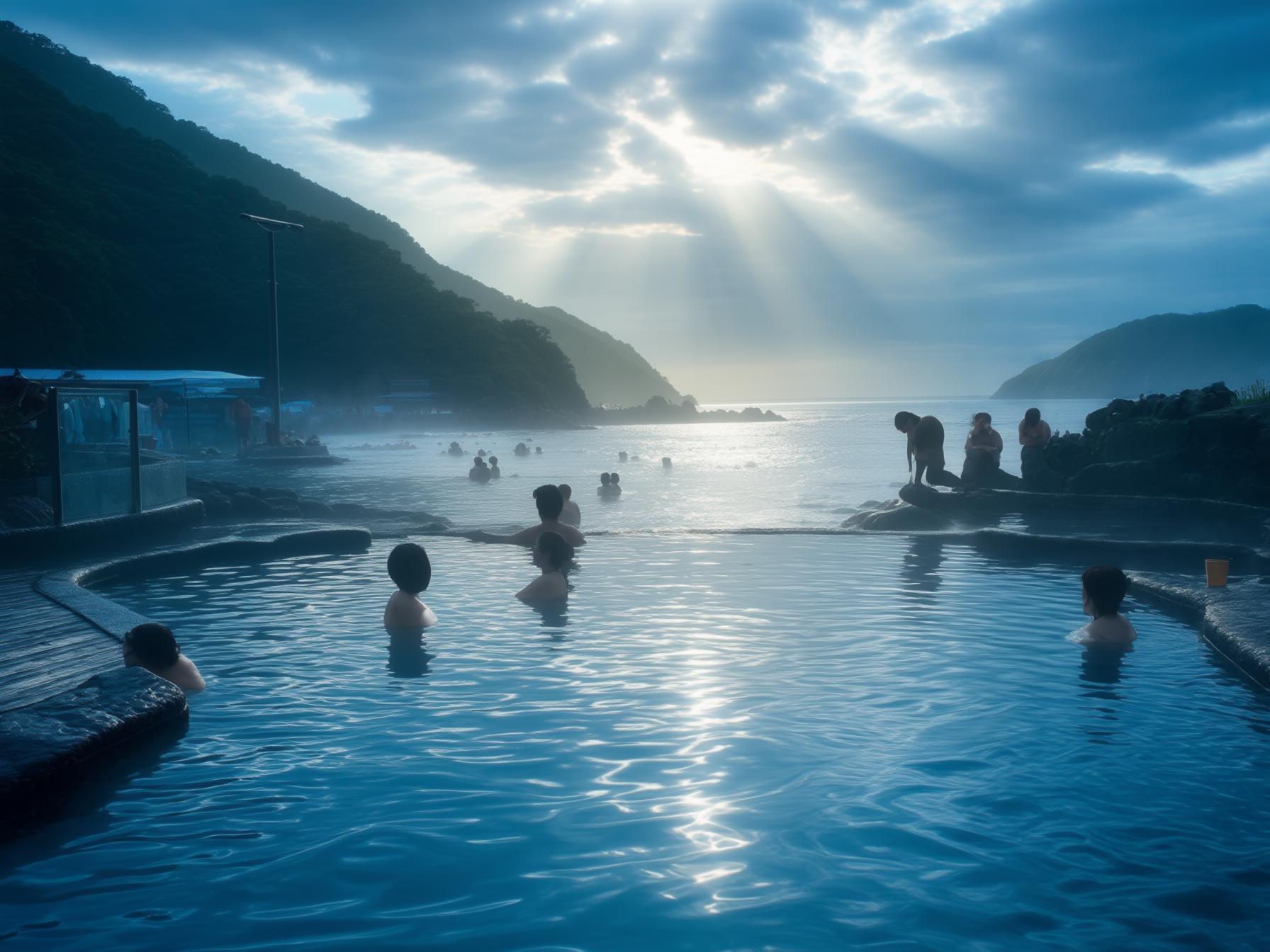Holiday in Atami
Embark on a 3-day adventure in Atami, Japan, with the help of an AI Travel Agent. Day 1 greets you with a soothing morning at Atami Sun Beach, followed by a cultural immersion at the MOA Museum of Art, and ends with a relaxing dip in Atami's famous Onsen hot springs. Day 2 transports you to historical Atami Castle and the serene Kinomiya Shrine. Relish fresh seafood at Ajiro Fishing Port or enjoy seasonal blooms at Atami Plum Garden. Start Day 3 with an Atami Ropeway journey up Mt. Kannonyama, explore the historic samurai villa, Kiunkaku, and conclude by savoring local delicacies on Atami Ginza Shopping Street. Use a Trip Planner App for cheap flights, cheap hotels, and tips from an Atami, Japan Travel Agent. Discover an unforgettable optimized travel experience with advice on the best stays, cheap eats, and attractions in Atami, Japan.
Day 1
Start your adventure in Atami with a relaxing and rejuvenating day. Enjoy the town's natural beauty, art, and therapeutic experiences as a perfect welcome to your trip.
Morning
- Visit Atami Sun Beach to relax by the sea and take in the beautiful coastal views.
- Explore the MOA Museum of Art, where you can discover both traditional and modern Japanese art, complemented by stunning ocean vistas.
Evening
- Unwind with a blissful soak in Atami's famous Onsen hot springs, and let the soothing waters rejuvenate your body and mind.
Day 2
Day 2 of your Atami adventure is filled with historical sites, natural beauty, and delightful culinary experiences. Immerse yourself in the city's rich cultural heritage and savor the local flavors.
Morning
- Visit Atami Castle to enjoy panoramic views and explore the rich history of the area.
- Stroll through the beautiful gardens surrounding Atami Castle.
Afternoon
- Visit Kinomiya Shrine, known for its monumental sacred camphor tree. It's an ideal location for peaceful reflection.
- Have lunch at Ajiro Fishing Port, where you can enjoy fresh, authentic seafood.
Evening
- Visit Atami Plum Garden if it is plum season (February-March) to see the blooms in their full glory.
Day 3
Your final day in Atami promises a blend of natural beauty, historical charm, and vibrant shopping. As you begin your day with a ropeway ride offering stunning vistas, take in the serene atmosphere of a samurai villa, and enjoy the bustling local culture, you'll have a memorable end to your journey.
Morning
- Ride the Atami Ropeway up to Mt. Kannonyama and enjoy expansive scenic views along trails.
Afternoon
- Visit Kiunkaku, a historic samurai villa with traditional architecture and serene Japanese gardens.
Evening
- Explore Atami Ginza Shopping Street to savor local delicacies and shop for unique souvenirs.
Frequently Asked Questions
The best time to visit Atami is during spring (March to May) when the cherry blossoms are in bloom, offering picturesque views and pleasant weather. Autumn (September to November) is also ideal, with mild temperatures and vibrant fall foliage. If you enjoy hot springs and a cozy atmosphere, winter (December to February) can be a great option.
Yes, Atami is generally safe for tourists. It is a popular destination in Japan known for its hot springs, beautiful coastline, and relaxed atmosphere. As with any travel destination, it is always wise to follow standard safety precautions, such as being mindful of your belongings, respecting local customs, and staying informed about any weather or natural disaster warnings in the area.
Whether you need a travel visa to visit Atami depends on your nationality and the purpose of your visit. Citizens of certain countries may enter Japan for short stays without a visa under visa waiver agreements. It's recommended to check with the Japanese embassy or consulate in your country for specific requirements before traveling.
Getting around in Atami is convenient due to its compact size and well-connected transportation options. You can explore the city using the following methods:
Walking: Many attractions in Atami are close to each other, making walking a great option for exploring the area at a relaxed pace.
Local Buses: Atami has a reliable bus network that connects key attractions, such as the MOA Museum of Art, Atami Castle, and hot spring areas.
Taxis: Taxis are readily available and a convenient choice for short trips or if you're carrying luggage.
Rental Cars: For those wanting to visit areas outside the city, such as the Izu Peninsula, renting a car offers flexibility and ease.
When traveling to Atami, consider packing the following essentials:
- Comfortable walking shoes for exploring the town and hot springs.
- Light clothing in summer, and layers or a jacket in cooler months.
- Swimsuit for enjoying hot springs or the beach.
- An umbrella or raincoat, as Atami experiences occasional rain.
- Personal toiletries, though hotels often provide basic amenities.
- Travel adapter if coming from a country with different electrical outlets.
- Snacks or water for convenience during day trips.
- Sunscreen and a hat for protection from the sun, especially in summer.
The cost of a 3-day trip to Atami can vary based on factors like accommodation, dining, transportation, and activities chosen. On average:
- Accommodation: Budget hotels/guesthouses may cost around $50-$100 per night, while luxury ryokans can range from $200-$500 per night.
- Meals: Daily expenses for meals can vary between $30-$100 depending on dining preferences.
- Transportation: A round-trip Shinkansen ticket from Tokyo to Atami typically costs around $80-$100. Additionally, local transportation may cost $20-$30.
- Activities: Entry fees for hot springs, museums, and other attractions can average $10-$50 per activity.
Overall, a 3-day trip to Atami could cost approximately $300-$1,200 per person, depending on the choices and preferences during the trip.
.png)



